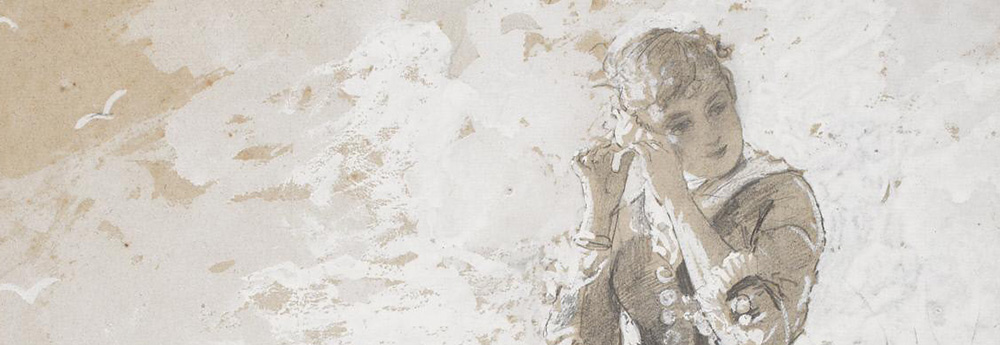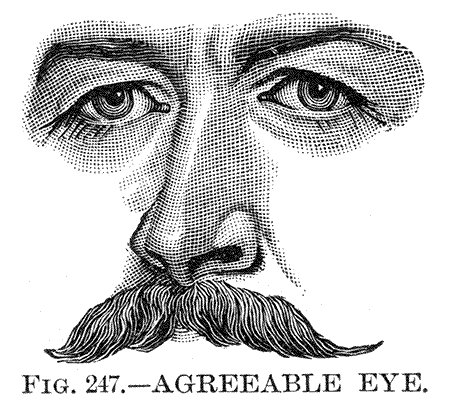a portrait

Winslow Homer, ‘Girl with shell at ear’ (1880) 1
To live in such a place was, for Isabel, to hold to her ear all day a shell of the sea of the past. This vague eternal rumour kept her imagination awake.
Six months in, it is safe to say that the book group’s reading of The Portrait of a Lady is not going well. It is a well established group; we’ve gotten through Ulysses and Dubliners, and only the fear of encountering too much Stephen Dedalus 2 kept us from A Portrait of the Artist as a Young Man – we chose a rather different Portrait instead. The choice has not been, if one were put to the point, entirely, shall we say, happy.
We are reading it according to the Atlantic Monthly serialization and have just finished the April 1881 number (enter Gilbert Osmond, Pansy Osmond, and two nuns, followed shortly by the Countess Gemini). 3 It is an awkward moment, and even I, one of the two champions (as it were) of the novel, am finding the going difficult. The scene-setting in Florence – a parallel, perhaps, with the tableau that opens the book – has a guidebook feel that is irritating in James, though it is charming in E.M. Forster. One suspects (silently, strongly) that the effect is intentional, is affected, and that makes it worse. This, at least, was the kernel of my irritation, and certainly four chapters in the dubious company of Mme. Merle and Gilbert Osmond do little to restore one’s faith in narrative felicity.
He was certainly fastidious and critical; he was probably irritable. His sensibility had governed him – possibly governed him too much; it had made him impatient of vulgar troubles and had led him to live by himself, in a sorted, sifted, arranged world, thinking about art and beauty and history. He had consulted his taste in everything – his taste alone perhaps, as a sick man consciously incurable consults at last only his lawyer: that was what made him so different from every one else. Ralph had something of this same quality, this appearance of thinking that life was a matter of connoisseurship; but in Ralph it was an anomaly, a kind of humorous excrescence, whereas in Mr. Osmond it was the keynote, and everything was in harmony with it.
Part of the problem, for the book group at least, is that it is a different sort of reading. Certainly James enjoys his neo-Gothic flourishes as much as the next novelist, but unlike Joyce (our pattern author), these flourishes all seem to be made of plaster, have no bills posted, and don’t appear to hide any skeletons of interest: they are the sole focus of attention – there is no recurring man in a mackintosh to reward one’s notice, no involved family backgrounds to provide chiaroscuro. As Isabel Archer observes: ‘She felt that Madame Merle’s ties always somehow had histories, and such an impression was part of the interest created by this inordinate woman.’ The reader, too, feels that these characters somehow have histories – but the histories James chooses to present are not necessarily the ones of primary interest. 4
‘I don’t pretend to know what people are meant for,’ said Madame Merle. ‘I only know what I can do with them.’
Part of the problem is Miss Archer herself: we are told that she is quite a ‘superior’ person (though not quite so superior as Mme. Merle), and she seems much admired by those she encounters, but there is the suggestion that she is not, as one might say, all that. We are told that she has depths of character (or nature), ‘but the depths of this young lady’s nature were a very out-of-the-way place, between which and the surface communication was interrupted by a dozen capricious forces.’ The reader is invited to root around in this out-of-the-way place, in hopes of … what? The ‘great fund of life’ that she carries about within her? What does that consist of but the digested remnants of ‘kindness, admiration, bonbons, bouquets, the sense of exclusion from none of the privileges of the world she lived in.’ She is, perhaps, sincere, but she is not particularly admirable: ‘With all her love of knowledge she had a natural shrinking from raising curtains and looking into unlighted corners. The love of knowledge coexisted in her mind with the finest capacity for ignorance’ (ch. 19).
Self-loathing Bostonians are a breed unto themselves; they undermine what fascinates them.
I remember, when I first went off to college, that the college president gave a speech to welcome the first-year students, and during the course of this speech (most of which I have happily forgotten), she mentioned The Portrait of a Lady, and even now my lip reflexively curls at what a poor model the book is for any undergraduate. I thought the choice pretentious and, instinctively, I thought it unkind. When I first read the book some years later, I was swept up in its language, its over-richness – it was like being a houseguest invited in, made comfortable, and expected to watch the host’s performance of hospitality, with no obligation to provide anything but attention. I was overseas, then, and alone, and this fictive camaraderie was a comfort. Now, reading it with others, I wonder whether that first impression – based on sublime ignorance – was not, after all, more correct.
- The temptation with Henry James is alway to illustrate him with John Singer Sargent, as though they were in some way working on the same project. That does a disservice to both. I also thought about looking out one of the paintings from the Uffizi that Mme. Merle mentions, but that would give rather the wrong impression.[↩]
- In my opinion, any quantity where x > 0 is too much Stephen Dedalus.[↩]
- The slow pace might be the problem – it is a book rather to be binged than savored.[↩]
- On the whole, we tend to agree that we might prefer Portrait of an Idle Consumptive: The Ralph Touchett Story – also known as The Undecorative Moustache.[↩]
